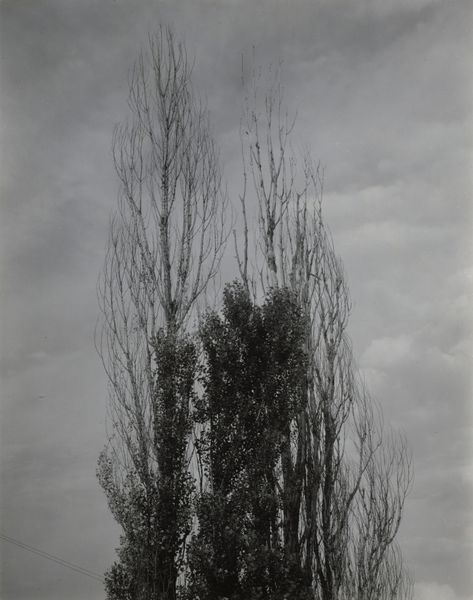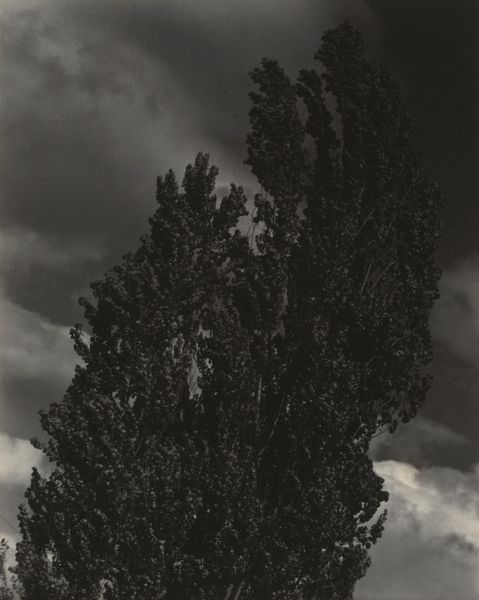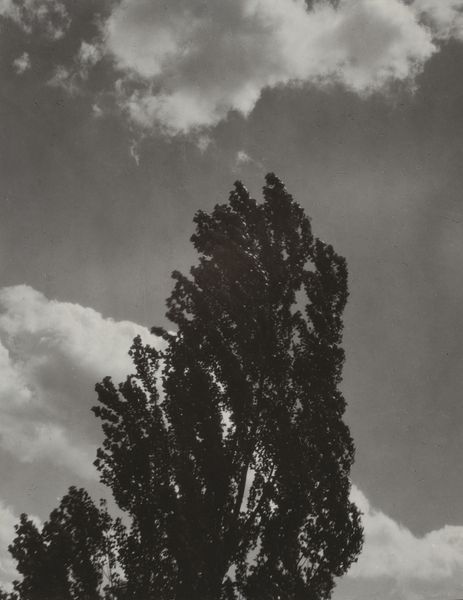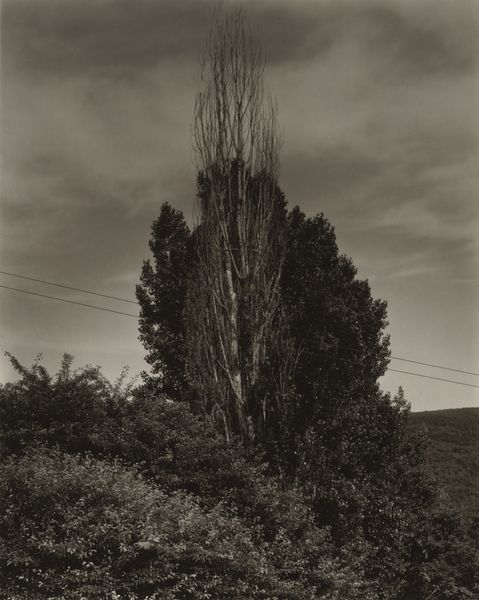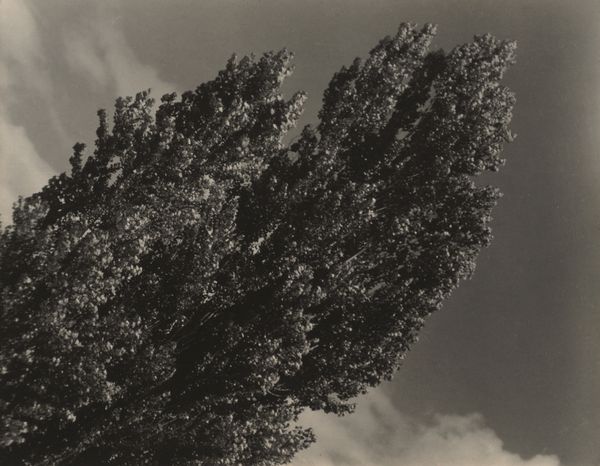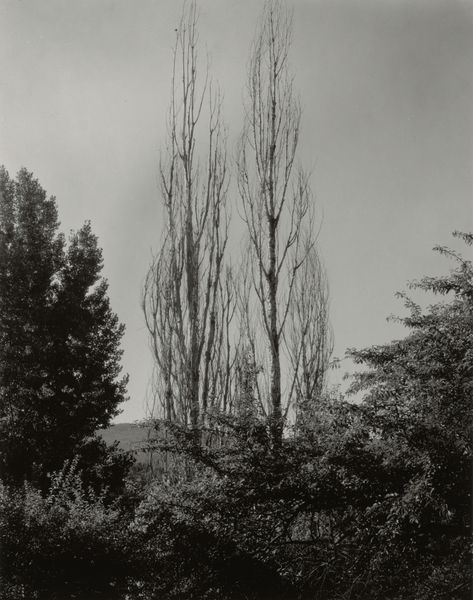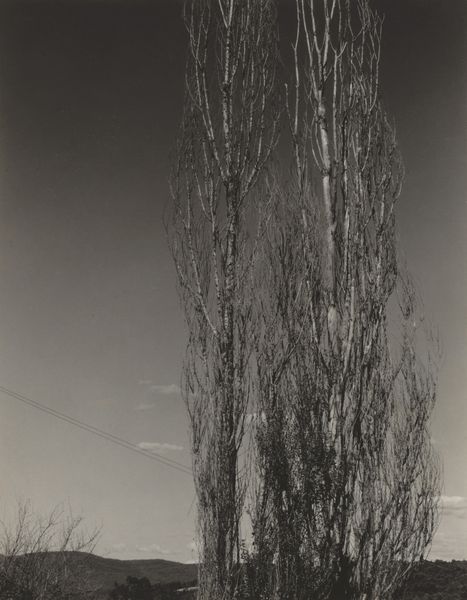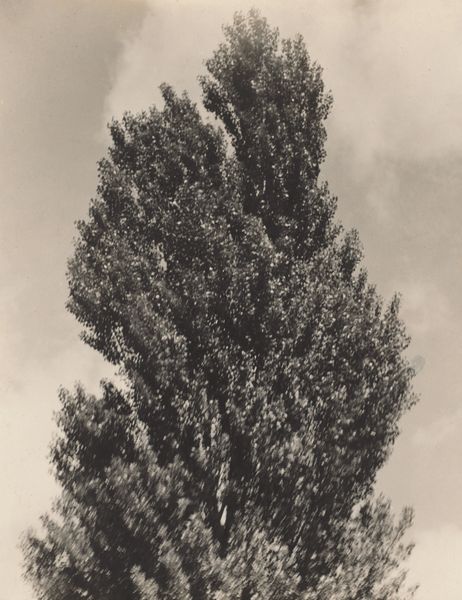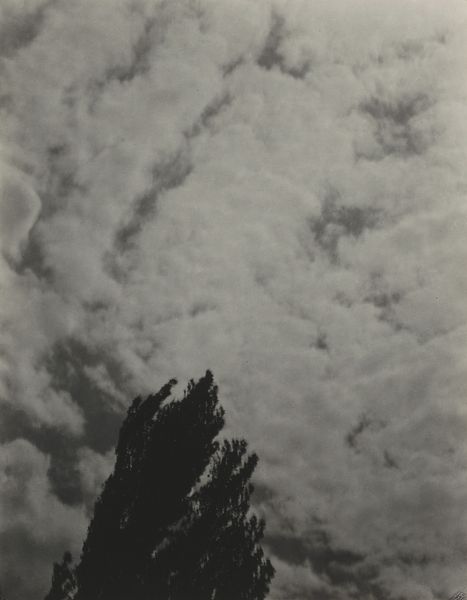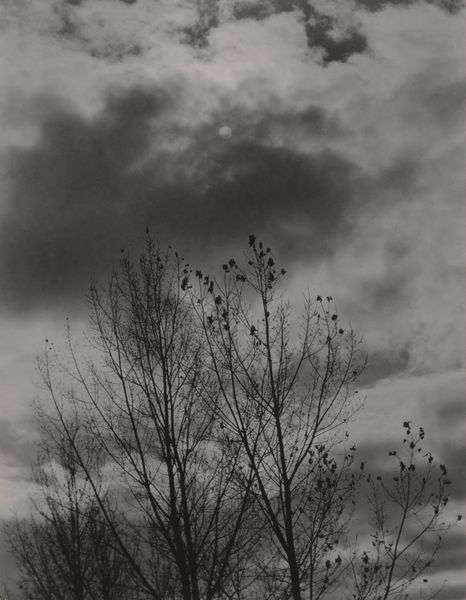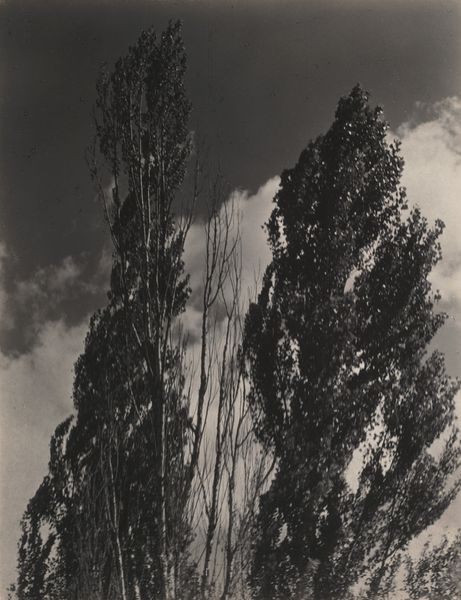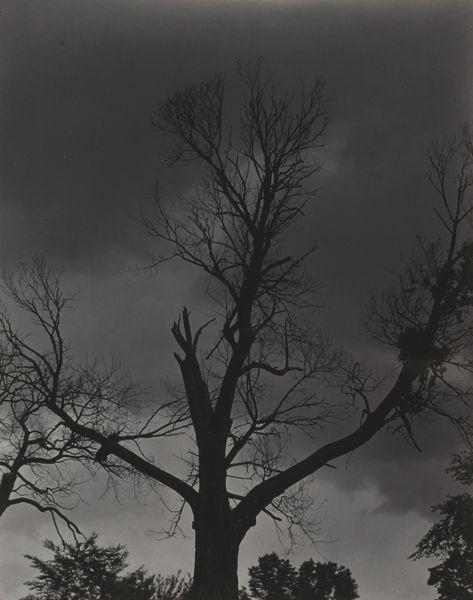
photography, gelatin-silver-print
#
landscape
#
photography
#
gelatin-silver-print
#
monochrome photography
#
line
#
modernism
#
realism
Dimensions: sheet (trimmed to image): 24.1 × 18.9 cm (9 1/2 × 7 7/16 in.) mount: 54.7 × 43.5 cm (21 9/16 × 17 1/8 in.)
Copyright: National Gallery of Art: CC0 1.0
Editor: Here we have Alfred Stieglitz's gelatin silver print, "Poplars—Lake George," created in 1932. I am immediately struck by the contrast between the stark, almost skeletal tree on the left, and the fuller, darker one to its right. What do you make of the visual dynamic here? Curator: Observe how Stieglitz organizes the frame. The formal structure relies on the tension between contrasting textures and tones. Note the meticulous gradation in the sky—almost a classical structure of chiaroscuro echoed within the arboreal forms. It pushes against what was at the time pictorialism using realism and line to create dynamic symmetry, Editor: Dynamic symmetry? Is that the rule of thirds? Curator: No, it involves dividing the space to create proportional relationships and visual harmony, guiding the viewer’s eye, and generating movement within the stillness of the composition. The branches themselves are positioned carefully along what we may consider compositional lines to make the eye move within the frame. Do you see where he uses dark against light for contrast? Editor: Yes, I see that along the trunk and in the sky. So the light is used almost as a line. Curator: Exactly! And note also how Stieglitz’s selection of monochrome simplifies and intensifies our focus. The image emphasizes stark forms without distraction. By creating this harmony it invites contemplation on nature’s inherent geometries. Editor: This piece makes so much more sense now, it isn't just a pretty shot, it's structured and that brings the impact. Thank you. Curator: My pleasure; it's about looking closely and decoding the language. There’s always something more to find when analyzing form and structure, hopefully that translates beyond Stieglitz’s art.
Comments
No comments
Be the first to comment and join the conversation on the ultimate creative platform.
